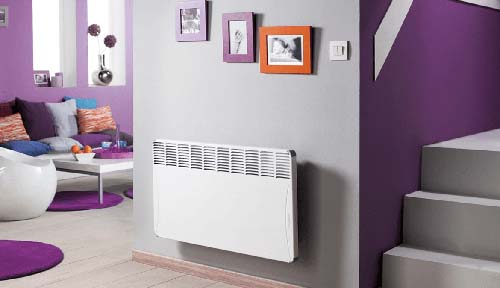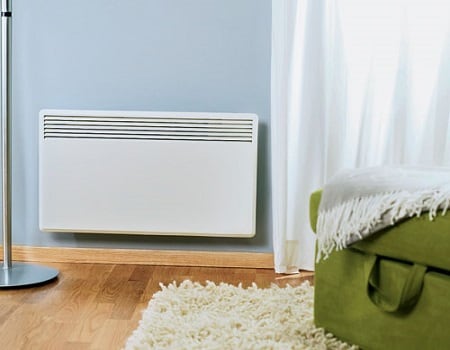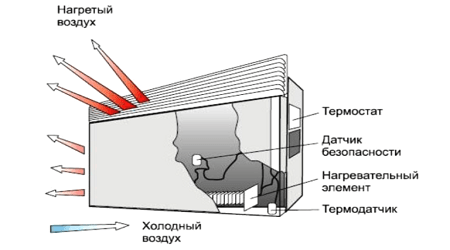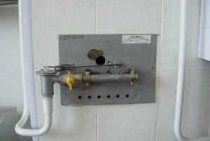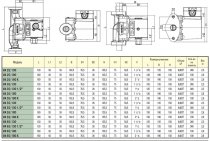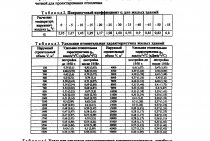Which is better infrared or convector
Infrared heaters appeared on the domestic market relatively recently. Such devices work on the principle of heat wave transmission. In this case, infrared radiation does not heat the air in the room, but the surrounding objects. Subsequently, heat is transferred from heated surfaces. The described heaters can be mica, gas or lamp.
The most popular variety is considered to be a lamp installation. Such devices can be mounted on walls or ceilings. Gas products heat the metal case until it begins to transmit heat waves to the surrounding space. In mica models, the heating source is considered to be overall metal plates, the surface of which is covered with mica.
We have already dealt with the advantages of convectors, and now let's talk about the advantages of infrared heaters:
- Silent operation;
- Rapid heating of the surfaces of objects;
- Economical electricity consumption;
- Safety for human health, except for gas appliances.
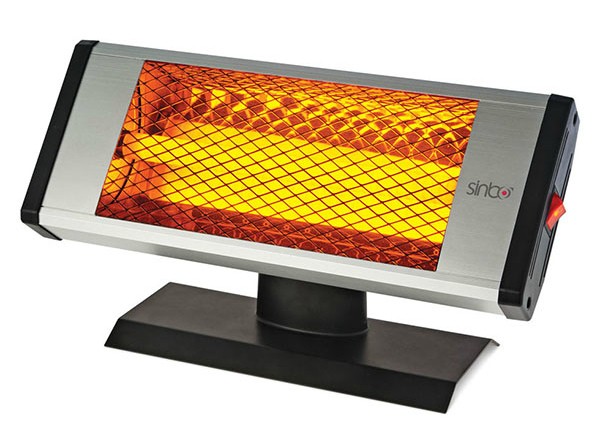
When comparing these two heaters, you should pay attention to similar qualities, for example, quiet operation, the ability to fix the device on the wall. Both those and other models will perfectly fit into the design of any room, but they also have differences:
- For small rooms with good thermal insulation, a convector would be ideal;
- The IR heater can be used in large rooms that cannot be fully heated. The use of such a device will allow localizing heat in certain areas.
Advantages and disadvantages
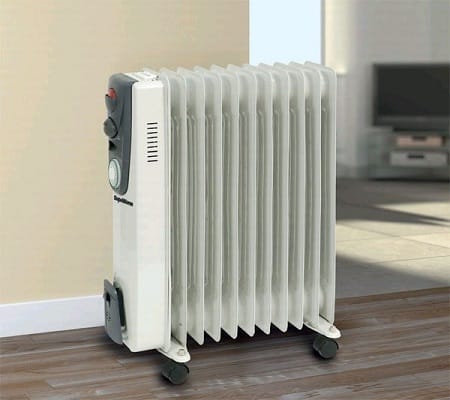
- Low cost.
- High-quality heating of the surrounding air due to the increased heat transfer area.
- "Soft" heating. If we compare with heaters with an open coil, it can be noted that the oil cooler does not dry out the air. In addition, during its operation, dust particles in the immediate vicinity do not burn. That is why in the process of work there are no foreign odors.
- Mobility. Since oil heaters are 98% floor standing and have wheels, they can be easily placed in any location of your choice.
- Durability and reliable performance.
However, in addition to the undeniable advantages, radiators also have disadvantages. Customer reviews also helped to discover them. So the cons:
- Fairly high t˚ C of the body. During operation at maximum power, the walls of the oil cooler can reach temperatures in excess of 90 C. This fact calls for thinking about the issue of safety.
- Impressive weight. Some models of oil heaters can "pull" up to 25 kg, and the smallest ones rarely weigh less than 10 kg. This can create additional inconvenience when moving.
- The probability of leakage of coolant (oil) in case of mechanical damage to the housing. Moreover, if this happens, the heater will simply have to be thrown away. The cost of repair is often incomparable with the cost of a new device.
What is better convector or fan heater find out the nuances
From a technical point of view, both a convector and a fan heater, and even, to some extent, an oil heater work on the same principle: heating the air in a room using convection air circulation when the rising warm air displaces cold air down to the heater.
fan heater
Fans come in different types
It is produced in various modifications - floor, wall, ceiling, devices for thermal curtains, located above the doors.
All are equipped with a fan, which arranges forced air blowing and heating through the heating element, which can be of the following types:
- electric spiral
- tubular heater
- ceramic tiles.
The most obvious advantages:
- cheapness
- compactness (even for the most powerful models)
- heating speed (a few minutes for a small room)
- mobility.
- constant fan noise
- after turning off the temperature drops very quickly
- high temperature of the heating element, due to which the air becomes dry and there may be a smell of burning dust.
Note. Any device with a temperature above 80 ° C will burn dust and dry the air. This is inevitable, which is why many modern models are equipped with a humidifier.
In summary, a fan heater is ideal for small rooms with drafts or those that need to be heated quickly and frequently. Also, they can be used to dry excessively damp rooms - for example, in the country after winter.
Convector
It is convenient to mount the convector on the wall
This device is a little more complicated than a fan heater, but due to the peculiarities of its operation, it is better to place it as low as possible to the floor. It consists of a heating element (electric coil, heating element) and a radiator. Sometimes it can be equipped with a built-in fan - then the design with a spiral practically does not differ from a fan heater in anything other than dimensions.
Available in floor, wall and floor versions. It is usually placed under the window, models with increased moisture protection can be installed even in the bathroom. They have good fire resistance, tip-over protection, and precise temperature control is possible.
Advantages and disadvantages:
- the price is higher than that of fan heaters, but it is quite affordable for any buyer
- silent operation - for models without a fan
- speed of work - an ordinary room will warm up in less than half an hour
- durability - designed to last for years
- power consumption is less than that of a fan heater, but also significant.
The disadvantages include the difficulty of heating high rooms, the fear of power surges and possible interruptions when working in drafts.
Thus, when answering the question of which is better - a convector or a fan heater, it must be borne in mind that the convector is more suitable for long-term uninterrupted operation, for example, for residential buildings, as well as office space.
Radiator
An oil cooler is called so because the working fluid is oil. First, the heating element fires, then the oil, then the radiator fins, and only then does the surrounding air begin to heat up. Due to such a long cycle, a lot of time passes before the start of its full-fledged work, after which it still takes time to heat the room. But after turning it off, it retains heat for a long time.
Its cost is comparable to convectors, but the energy consumption is slightly higher. The temperature of the outer shell is also higher and it is more bulky than the converter. So, choosing between a convector or a radiator, which is better? There is no single correct answer. If you need to keep warm in the room for a long time, both are suitable, but convectors are more practical and safer for people, due to the fact that the temperature of the skin does not exceed 90 ° C.
We also recommend reading how to choose a convector?
Advice. You can purchase a pair of devices to work together. For example, a fan heater quickly warms up the room until the oil cooler is hot, after which the fan turns off.
What to choose
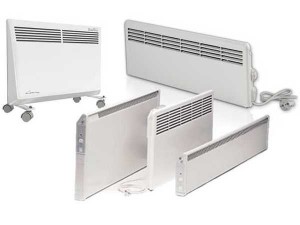
Of course, convectors are somewhat more expensive than radiators. In this regard, some users are opting for more affordable oil coolers. This is not always justified. After all, convectors, despite the small difference in price, have a lot of indisputable advantages. What makes the choice of these devices optimal for many cases. Therefore, the convector market is growing by about 20% every year.
What is better convector or oil heater. Comparison and difference. Pros and cons of electric heaters
Specifications
Oil heaters work by circulating hot oil through all sections of the radiator. It contains a special oil that retains heat for a long time and does not require constant heating. The air around the heater is heated by the coil and circulates outwards and upwards. The convector can be called a forced air heater, it sucks in air from the room, heats it in the central chamber and the heated air is discharged back into the room.
Advantages of an oil heater
Oil heaters are by far the cheaper option, both in the initial cost and in the subsequent costs, including the electricity bill. They usually require less electricity to heat than other types of heating, and because the oil retains heat for a very long time, they maintain the temperature for a long time. In addition, due to their small size and mobility, they can be placed almost anywhere, such as under the table. They are also much safer, you don't have to clean everything around them and therefore there is less risk of fire with them.
Benefits of a convector
Convection systems heat up a room much faster. If you already have an air duct system in your house, convectors will heat up much faster. With the use of ducted systems, the rooms in the house will be heated more evenly than with space heaters. Without a duct system, convectors do not have these advantages, but still the circulating heated air will heat the room faster.
Disadvantages of an oil heater
Oil heaters heat up a room rather slowly. The process of heating the oil, then heating the air, then distributing the heated air into the room takes a long time. Large rooms are very poorly heated by small oil heaters unless left running all the time, although they don't require much energy and can cost you a pretty penny over time. If oil leaks, it may cause skin irritation and burns.
Disadvantages of the convector
After a while of heating the room, they become completely inefficient because, as already mentioned, most of the hot air escapes into the ceiling. If they are too close to a window and there is a draft, cold air will constantly be recirculated through the heater and potentially cause it to overheat. In fact, convectors are one of the main causes of fires in residential buildings. They also require a lot of energy and will become a more expensive heating option over time.
Convector and oil heater comparison reveals the undisputed leader
So, let's compare the main indicators of the two most popular heaters.
1. Economy of use.An oil radiator consumes a quarter more electricity than a convector one. Since electricity tariffs are constantly growing, this fact can be decisive when choosing a device.
2. Warm-up time. Heating the air with an oil heater goes through several stages: first, electricity heats the heating element, then heating element - oil, and it, in turn, heats the fins of the body, which gives off heat to the air masses. It takes a lot of time (and electricity, which costs a lot) - the device has long been turned on, and the cold is still in the room. Fans built into the oil heater can speed up the process.
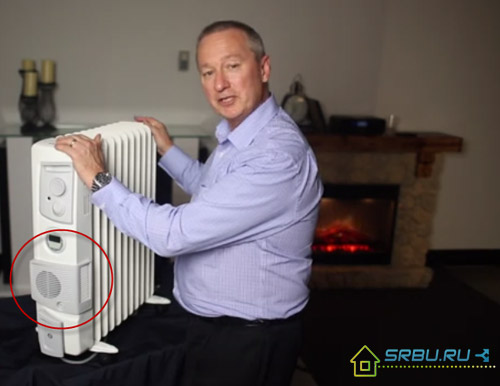
At the convector, the heater immediately heats the body, so its efficiency is at least 95 percent. But the heating rate is also not so great, and an oil cooler equipped with a fan, all other things being equal, is more likely to outperform a convector.
3. Comfort at work. This refers to the ease of carrying and installation. It should be noted that convectors in this regard are more convenient and mobile. Their weight is no more than 10 kilograms, and oil devices are more bulky and heavy - their weight ranges from 18 to 25 kilograms. It is more convenient to move convectors on wheels, and it is not difficult to fix them on the wall, which will save space in the apartment and facilitate cleaning. In addition, the temperature created by the convector is more comfortable. It has no differences throughout the volume of the room.
4. Safety. You understand that hot oil is not the best neighbor. It heats the body of the heater so that it is not far from a burn. The exception is heaters equipped with a protective cover.
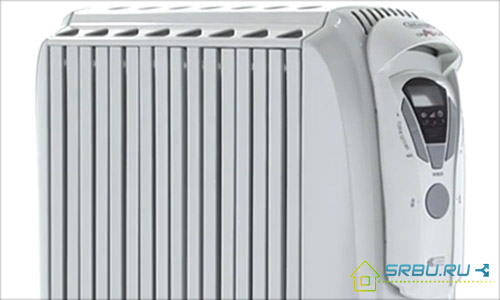
But convector devices can be called absolutely safe. After all, their body heats up to only 60 degrees, and at this temperature you can’t get burned. Equipped with a protection function, the convector, left unattended, will not catch the owner. But in no case should an oil appliance be left alone with the room - after all, some of its models do not even have an overheating sensor.
5. Service life. Probably more than one person has witnessed oil leaking from an oil heater. Sooner or later, a leak appears. First, a microcrack appears on the body, then oil begins to slowly evaporate through it. Well, as a result, the heater fails, and no one undertakes to repair it - is it possible to find a tiny microcrack. As for convector heaters, they serve for 10 and 15 years, although the manufacturer usually indicates a 5-year warranty period.
6. Environmental friendliness of the device. To begin with, let's take it as an axiom that the dust in the room will always rise during the movement of air during convection. Therefore, dealers who talk about some special models of convection or oil heaters that do not raise dust are lying. Now about burning oxygen. For convectors, the peculiarity of the heating element material and the heating temperature of the body are such that this process is physically impossible. Some people argue that burning oxygen is still possible with oil coolers. Don't believe it - it's not true.
Not a single heater burns oxygen - there is no open combustion in them!
7. The cost of the device. Here, oil heaters take the lead - their prices are significantly lower than for convectors. But do not forget about the ratio of price and quality, that is, compare not only prices, but also the most important technical indicators (which were discussed above).
Radiator characteristic
Conventional radiators, which are in every apartment, use water or glycol to heat the room. Electrical options have some differences. They are used as a source of additional heating, they can be moved, and they are arranged in a slightly different way.
Consider how the heating radiator works in more detail. It consists of a metal sealed container, which is filled with oil. A heating tubular element - a heating element - is built into the body. When the heating element heats up, it transfers heat to the oil. The heated part rises. The body, heated by oil, transfers heat to the heated room.
Among the positive aspects of the radiator are the following:
- Reliability
- Efficient heating.
- Soft heating. The device dries the air less than heating heaters with an open coil, does not burn dust.
- Mobility.
- Profitability. In view of the low cost of the device.
- Durability.
However, the radiator also has disadvantages. For example, the surface of the radiator gets very hot. The temperature of the outer surface can reach more than +90 degrees. Of course, this improves the quality of heating. But there is a chance of getting burned if you accidentally touch the radiator or knock it over. If the case is damaged, there is a possibility of oil leakage. The downside is the weight. Due to the large amount of oil and heavy metal housing, even a small radiator weighs about 10 kg.
If, when installing a stationary battery, it is necessary to take into account the volume of water in the heating radiator, then when buying an oil version, you need to pay attention to the power of the equipment
It is important to remember that any device should be used correctly and in the conditions for which it is intended.
It is important to remember that any device should be used correctly and in the conditions for which it is intended.
Convector characteristic
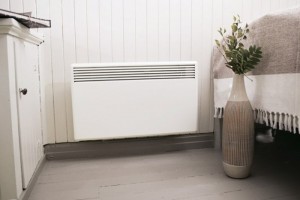
Among the characteristic positive features of the convector are the following:
- Minimum inertia. The device allows you to heat the room to the set temperature with an accuracy of a fraction of a degree.
- Possibility to heat several rooms at the same time. It is possible to combine convectors into one system under common control. What can not be said about the oil cooler, which can only work in individual mode.
- The temperature of the external surface of the unit does not exceed +45 degrees. This makes the device more secure. Therefore, it can be used in children's rooms.
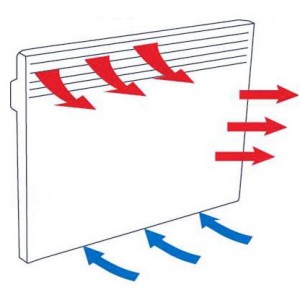
Convector type heaters
The electric convector is a metal rectangular case, in the lower part of which there is an electric heating device (TEH) and an air intake grille, and in the upper part there is an air outlet grille. During operation, cold air, entering the convector, is heated by means of a heating element. Warm air is lighter than cold air, it rises and exits through the upper louvers. This physical phenomenon is called convection, hence the name of the heater. In place of the heated air that has gone up, a new portion of cold air comes from the room, and so the process is repeated constantly.
The design includes a thermostat, thanks to which the desired temperature is maintained in the room.
Unlike oil-type heaters, which are mainly floor-mounted, convector radiators are mainly fixed to the walls. There are also mobile models - usually they have wheels for convenience. But that's not all, there are varieties of convectors that are mounted directly on the floor, usually near a window or door. Outwardly, they look like a long narrow lattice strip, warm air rises from it.
Advantages of convector heaters:
- Fire safety.
- You can combine several devices into a common system.
- Silent operation.
- Saving electricity.
- Light weight.
Disadvantages of convectors:
High price.
Differences between an infrared heater and a convector
The principle of operation of an infrared heater is fundamentally different from a convector. The latter does not heat objects, but the air of the room in which it is installed. This is due to the free circulation of air - convection generated by an electrical device: cold air, concentrating in the floor area, enters the convector through the slots in the lower part of the case, heats up inside it when it comes into contact with the heating elements and naturally rises to the top, because the density warm gas is lower than cold gas.
Giving heat to the surrounding air, the heated stream gradually cools, becomes heavier and lowers, after which it again enters the device. Thus, there is a gradual circulation of air masses and an increase in room temperature. The device transfers heat only to those objects that are in close proximity to its body. The rest of the room is heated more or less evenly.
Overview of manufacturers and models of convectors
Since the popularity of convectors is rapidly increasing, it is worth considering the main models presented on the domestic market.
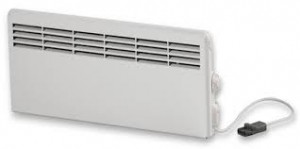
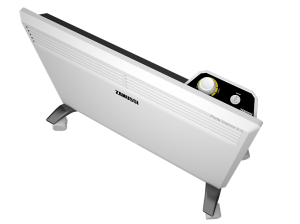
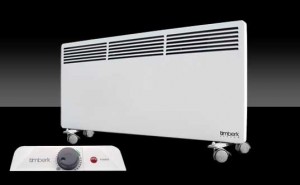
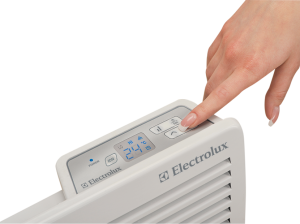
Very popular convectorElectrolux Ech ag 1500 ef, which is designed to heat a room with a total area of 15 sq.m. There is a timer, thermostat, as well as the option of air filtration. The device is equipped with a self-diagnosis function.
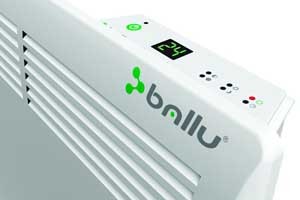
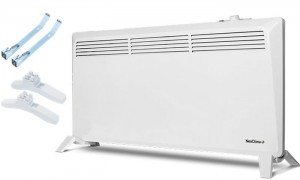
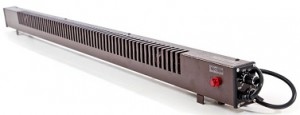
Among the budget options, one can name the Wild Wind convector of Ukrainian production. The units have a good design and fit perfectly into a room with any interior. Such heaters quickly heat up the room. They can be attached to the wall. Very compact and light weight. Economical at work.
Pros and cons
Consumer reviews will also help us determine all the advantages and disadvantages.
Advantages:
- When using a convector, you can set the exact (literally up to a degree) temperature in the room and the automation will maintain it.
- The case of the device is heated no higher than 60 C, which is much safer than in the case of oil appliances.
- With a little effort, you can connect several convectors to a common heating system. An oil-type heater works exclusively individually.
Nevertheless, the convector has its drawbacks:
- Customer reviews allow us to conclude that when using such equipment in the room, a slight draft may occur.
- Rooms with high (above 3 m) ceilings may not be warmed up very well by the convector. Warm air will "hang" under the ceiling and the device may not work efficiently enough.
- Natural convection can lead to increased movement of microorganisms and dust particles. This can be unpleasant for people prone to allergic reactions or diseases of the ENT organs.
Convector type heaters
They differ from oil coolers in the shape of the body - they have it flat and smooth. It has a room thermostat, thanks to which the desired temperature is maintained in the room.
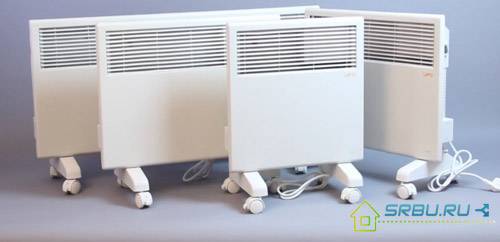
Unlike oil-type heaters, which are mainly floor-mounted, convector radiators are mainly fixed to the walls. But there are also floor models - usually they have wheels for movement.
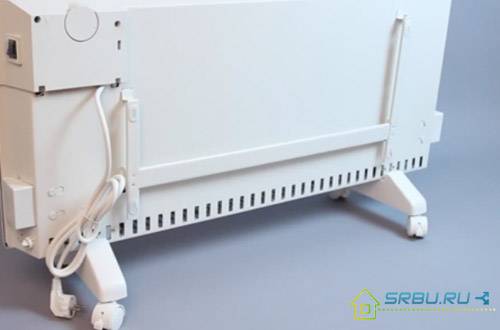

Oil type heaters radiate heat. Convectors have minimal heat radiation - only from the front panel. And the air is heated by the exchange of heat between cold and hot air masses. In this case, there is a constant movement of air along the surfaces of the heater.
Convectors do not make any noise, their work is based on a natural process - air convection.They heat the room quickly and evenly. Mounting the device on the wall is easy and simple, and if desired, you can install it on the floor. There are convector heaters for both home and office, commercial or industrial premises.
In a convector device, air moves, moving to different heights. Hot, rarefied air flies up to the ceiling, and heavy cold air tends down to the floor. If convection occurs correctly, then constantly there are flows of air masses that heat the room.
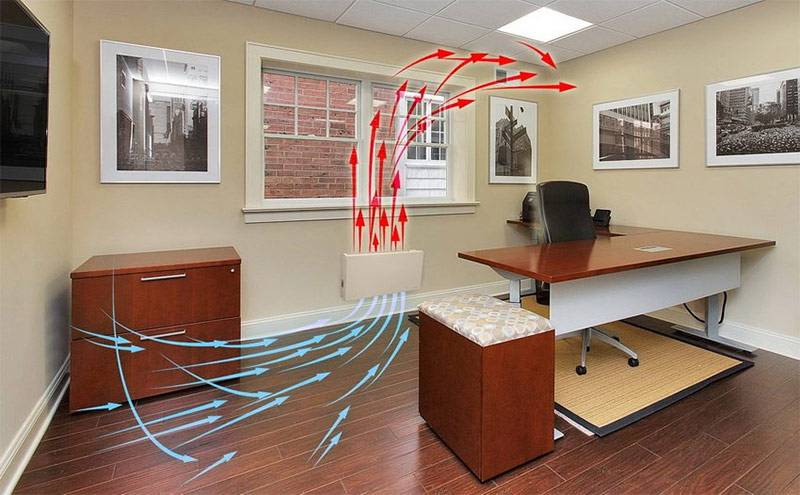
The device consists of the following elements:
- Convection chamber (heater body);
- Heating element built into the housing.
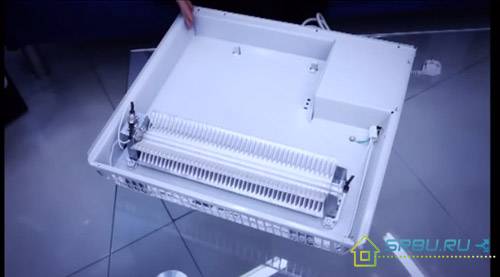
During operation, cold air entering the convector is heated by a heating element. The air becomes lighter, it rises and exits through the upper shutters. Well, in place of the cold room air that has gone up, a new portion comes.
The heated air has the temperature set on the thermostat. It turns on and off the heating element. The efficiency of this device is very high. The slits located on the front panel are designed to let hot air out. So that it does not move straight up, but heats the floor and walls, the blinds for its exit are directed downwards. The air does not come out immediately, but accumulates inside and receives excess pressure. After that, it exits the device in a horizontal direction.
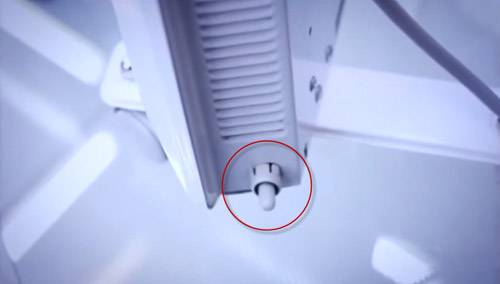
Since the heating element is specially fixed in the housing, you do not have to worry about grounding. After all, the heating element does not have contact with the metal of the case - between them there are stops made of special heat-resistant plastic. And structurally, the device is made in such a way that the heat in the room is distributed evenly. This achieves coziness and comfort.
For those who cannot decide what to buy a convector or an oil heater, it will not be superfluous to know about the advantages of convector heaters:
- These devices are fireproof and meet the requirements of Eurostandard.
- Such heaters placed in each room and combined into one network can be used to obtain a modular heating system. In a dacha or in a country cottage, it may well be used instead of a boiler, which is expensive and requires the installation of numerous heating pipes,
- Thanks to the electronic thermostat and various operating modes, you can save a lot of electricity.
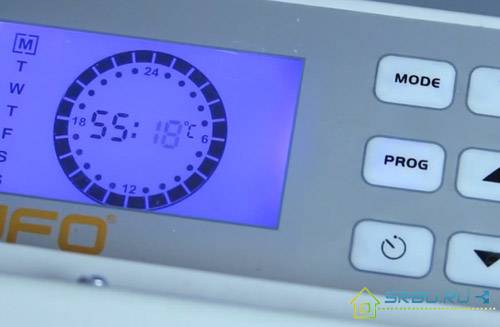
How a convector is arranged and works
Outwardly, it is very easy to distinguish a convector from an oil cooler. If the latter looks like an "accordion on legs", then the former has a flat, smooth body with slots at the top and bottom. The main difference between these devices is the method of heating the room. The radiator first heats the oil, and the convector directly heats the air masses.
The principle of operation of the convector is based on the physical properties of cold and hot air. The second one is known to be easier. In the hollow body of the convector there is only a heating element (spiral) and a temperature sensor. Cold air enters the convector through slots located at the bottom of the appliance. Then the air masses, heated by the heating element, naturally exit through the holes located in the upper part of the housing. And their place is again taken by cold air, the process repeats.
Each convector heater is equipped with a temperature sensor that turns the device on and off depending on whether the air in the room has reached the set temperature. This is very convenient since there is no need to monitor the device. Automation independently maintains a comfortable temperature in the room.
Almost all models of convectors have two ways of placement. They can be hung on the wall or installed on special legs and placed in a convenient place on the floor.
Which is safer, an oil heater or an electric convector
The oil cooler heats up to 150 ° C, if handled carelessly, you can get burned. Convectors only heat up to 60°C
If an oil-filled heater does not have a thermostat and sensors that protect against overheating, such a device cannot be left unattended. Convectors operate in fully automatic mode and can be operated without human presence for a long time.
The opinion of experts on the account of device security is unequivocal. An oil cooler dries out the air and is often the cause of a healthy indoor climate. The convector keeps natural normal humidity in the room.
Which heater to choose, oil or convector
Having considered the pros and cons of a radiator and a convector, we can conclude that the main advantage of an oil heater is its mobility and relatively low cost. But the features associated with the operation of the device limit its operation. It is not recommended to use oil heaters as a permanent source of heating.
Convectors, on the contrary, are economical, have fast heat transfer, and are completely safe in operation. Electric convectors cost approximately 1.5-2 times more. But they can be installed for constant space heating.
Comparison of oil heaters and electric convectors showed a clear advantage of the latter. The popularity of oil heaters, despite all the obvious shortcomings, is not decreasing. This is due to the low cost and mobility.
Household convectors have not yet received wide recognition from the domestic consumer. But convection heaters are worth choosing if you need an economical and safe source of heat in the house.
